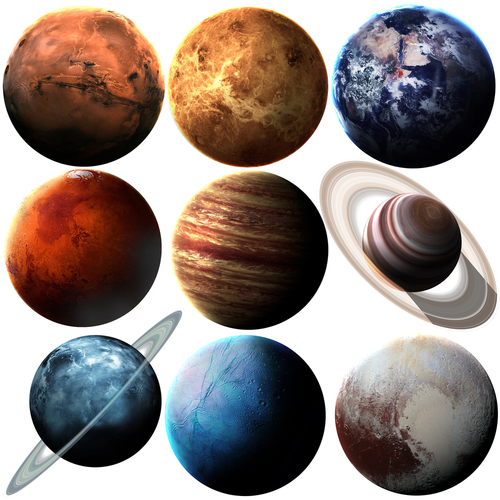Saturn, Mars, and Jupiter Will All Align This Week — Here’s How to See the Rare Event
If you rise early on Wednesday, March 7 — around 5:00 a.m. — and look to the southern horizon, you will see a rare planetary alignment.
Next to a bright quarter moon will be the planet Jupiter, and to its left, Mars, followed by Saturn. Left of Saturn is Pluto, the recently-demoted dwarf planet that will be far too small to see with the naked eye.
Over the next few days, the waning moon will appear smaller and smaller as it appears to drift between the planets. Before dawn on March 11, a thin crescent moon will be visible west of Saturn.
The planetary alignment, however, will be visible for a few weeks.
What Happens When the Planets Are Aligned?
There is no special significance to a planetary alignment, only a special beauty for those who make an effort to observe the event. So how do the planets line up? The eight planets in our solar system orbit the sun at different speeds, and since Earth is also moving, our view of the planets constantly changes. You can see a ‘live’ view of what’s happening in the solar system on The Planets Today.
Do Planetary Alignments Cause Earthquakes?
It’s a common misconception, but there is zero evidence that a planetary alignment causes an increase in seismic activity. After all, the solar system is an awfully big place, and any differences in gravitational pull created during this phenomenon are negligible.
Do All of the Planets Ever Line Up?
Never. Our solar system has four inner planets (including Earth), an asteroid belt, and the giant gas planets. Although all eight planets orbit the sun at roughly the same plane, it’s not exact. So the phrase ‘planetary alignment’ is used rather loosely, and refers to when they appear to be close — and that’s only from the point of view on Earth. Even if they did line up exactly, it would be very difficult to see Uranus and Neptune, making the idea of a complete planetary alignment rather, well, pointless.
When Are the Planets Are Aligned?
Although the planets never align perfectly, it is possible to see five of them in a rough line once every few decades. Such an occasion last happened in April of 2002, when Jupiter, Saturn, Mars, Venus, and Mercury appeared together.
In 2018, the planets will align around 5:00 in the morning on March 7. The arrangement will be visible for a few weeks.
When Will the Planets Align Next?
If you miss this planetary alignment, the next one will occur on September 8 in 2040, when Mercury will be nearest the horizon, followed by Jupiter just above it and, just to the southwest, a crescent moon will appear to shield Saturn, Venus, and Mars.
For those of us lucky enough to be alive on May 6, 2492, it will be possible to see all seven planets — Mercury, Venus, Saturn, Mars, Neptune, Uranus, and Jupiter — in the predawn sky. They will not, however, be in order (as you might see in textbooks), nor will they appear in a straight line.
What Is the Bright Red Star Near Jupiter?
When observing this week’s planetary alignment, don’t mistake the bright red star (the supergiant, Antares) for the planet Mars. Located between Jupiter and Mars, Antares actually means ‘Rival of Mars’ in Greek, because they pass so close together once every two years.
While Mars is approximately 140,000,000 miles from Earth, Antares is a staggering 600 light years away, and 700 times bigger than the sun.
It’s actually easy to tell the difference between the red star and the red planet. Antares will twinkle, while Mars will not. On the morning of March 8, the noon will be directly above Antares, and between Jupiter and Mars.

